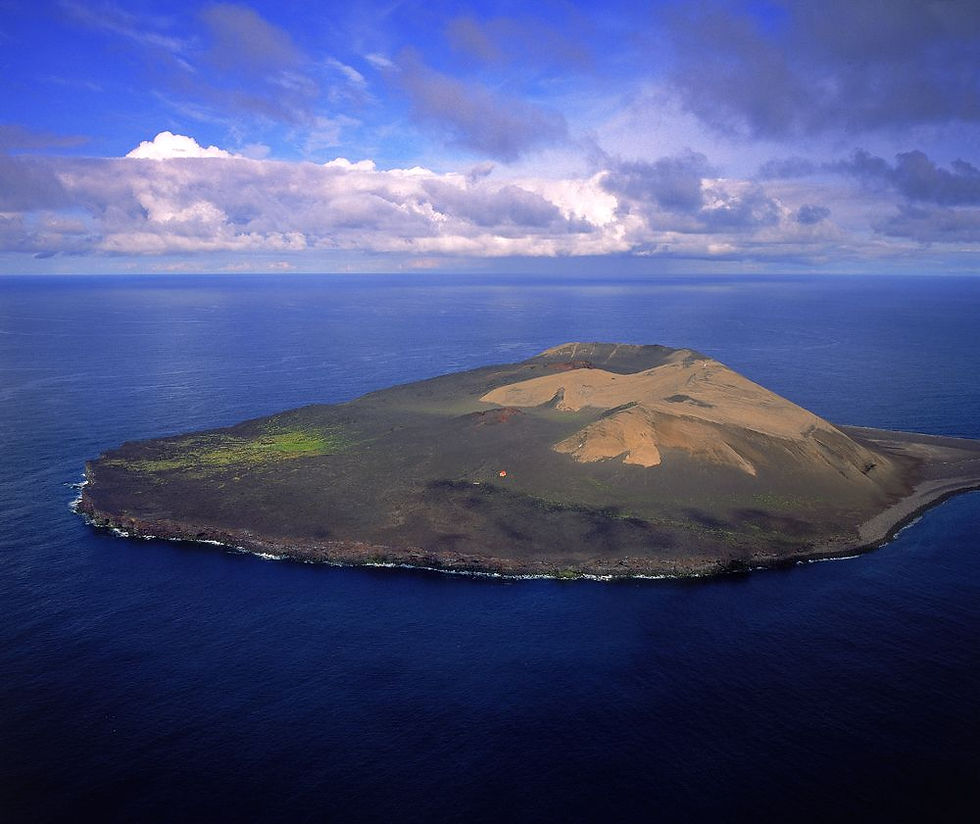Click the tartan to view its entry in The Scottish Registers of Tartans which includes registration details, restrictions, and registrant information.
Unregistered tartans may link to one of the web's online design environments for similar information.
For any questions about reproduction of designs or weaving of these tartans, please contact the registrant directly or via this website.
New Worlds Week
"Surtr moves from the south
with the scathe of branches:
there shines from his sword
the sun of Gods of the Slain."
~ Völuspá (Prophecy of the Seeress), from the Poetic Edda, ca. 1220
The world’s youngest island, Surtsey, emerged dramatically in November 1963 near the town of Heimaey, part of Vestmannaeyjar off Iceland’s southern coast. Forming through volcanic activity that lasted until 1967, this island has captivated scientists from its inception. Volcanologists closely studied its eruption and creation, while botanists and biologists eagerly observed the rapid colonization of life on what was initially a barren landmass. Named after Surtr, the fiery jötunn from Norse mythology, Surtsey carries the mythic weight of Ragnarök, where Surtr, wielding his blazing sword, battles the god Freyr, unleashing flames to consume the Earth. This tartan draws inspiration from the stunning landscape and rich mythology of Iceland, blending beauty and legend into this vibrant design. This tartan is one of a beautiful and inspirational collection inspired by the landscape and mythology of Iceland. 💙 💜 🧡 🤍 💚 ❤️ 🖤 💙 🌋 🇮🇸
Iceland’s youngest island, Surtsey, began to emerge on November 14, 1963, and for the next three-and-a-half years, a series of eruptions produced a new island of basalt and ash about 20 miles from Icelands’s southern coast. Today, it’s one of the few places on Earth that has remained relatively pristine and untouched by humans and houses new life of all kinds, from plants to birds and even spiders.
Life came to Surtsey within a year of its birth. A 1964 New York Times article noted that plants, birds, and even a mosquito had already shown up. Spiders were blown to the island, while some other insects arrived by floating across the ocean’s surface. Birds were some of the first inhabitants of Surtsey, and a number of species have been spotted since, including some squacco herons typically only seen in Southern Europe.
The Icelandic Institute of Natural History reports that grasslands on Surtsey have expanded, including a new species of vascular plant, expanding the green areas of the island even further.
This expansion is fuelled in large part by sea birds, who have nest on Surtsey. Biologists studying the bird life there found that not only have nesting grounds expanded, accelerating the plant growth; newer and larger bird species are starting to take over. This is especially the case with the great black-backed gull, which have been experiencing a population boom on the island.
Designed by Carol A.L. Martin, according to the Scottish Register:
"This tartan celebrates the birth of Surtsey, currently the geologically youngest island on Earth. This tiny part of the Vestmannaeyjar Archipelago off the southern coast of Iceland was formed by a series of volcanic eruptions between November 1963 and June 1967. Surtsey was declared a UNESCO World Heritage site in 2008. The colours used were inspired by the island of Surtsey."
According to the designer, the central red lines represent the lava which welled up from great depths to form this island in the mid-1960’s, black for the volcanic rock, brown for the soils that have formed on the island over the decades, white for the surf crashing against the shores and for the sea birds, green for the first mosses and plants that arrived and colonized, blue for the vast Atlantic Ocean and the central black line for the mid-Atlantic Ridge.
For more on Surtsey, click the island!








